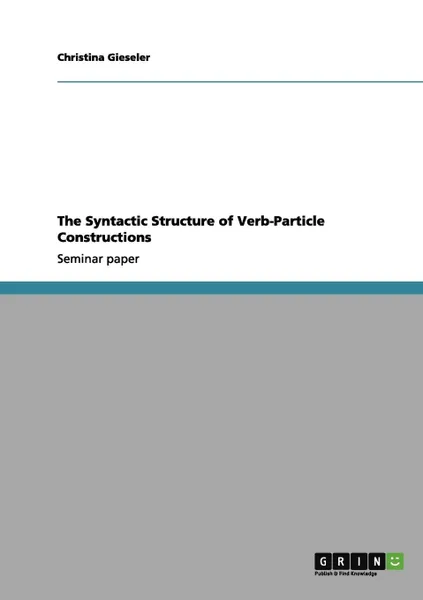The Syntactic Structure of Verb-Particle Constructions 12+
Автор: Christina Gieseler
56 страниц
Категория: Энциклопедии, справочники
ISBN: 9783656122722
Язык: Английский
📗 Seminar paper from the year 2011 in the subject English Language and Literature Studies - Linguistics, grade: 1,0, University of Wuppertal, language: English, abstract: IntroductionVerb-Particle Constructions occur in "most, if not all, of the Germanic languages" (Dehé: 2002:1, Olsen 2000:149). They are also known as "verb-particle combinations", "phrasal verbs", "particle verbs" (PVs) or "separable (complex) verbs" (cf. Dehé ibid., cf. Dehé, Jackendoff, McIntyre, Urban 2002:1). VPCs formally consist of "a verbal stem and an intransitive prepositional or adverbial element", a so-called particle (Olsen 2000:149).In linguistic research, "there is no uncontroversial definition of particles which reliably demarcates them from similar items and has cross-linguistic validity" (Dehé et al. 2002:3)[...]According to Dehé (2002), "the perhaps most striking property of transitive PV's in English is their appearance in two alternating orders" (3) as the English particle "can appear on either side of a direct object, unless it is a (non-contrastively accented) pronoun" (Dehé et al. 2002:2, cf. Jackendoff ibid.). In the so-called continuous order the particle is "adjacent to the verb and precedes the DP-complement" as in (1) (Dehé 2002:3-4). In the discontinuous order "the particle follows the DP-object" (cf. 2) (ibid.). In this order the use of unstressed pronouns is obligatory as illustrated in (3...
Мнения
